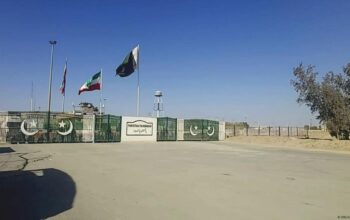By Staff Reporter
ISLAMABAD: Finance Minister Muhammad Aurangzeb on Tuesday rolled out a Rs17.573 trillion budget for the fiscal year 2026, slashing spending by 6.9% and targeting a hefty Rs14,131 billion tax take, up 8.95%, under the watchful eye of the International Monetary Fund (IMF).
The budget, unveiled in a tense National Assembly session marked by former prime minister Imran Khan’s opposition Pakistan Tahreek-e-Insaf party’s protests, ramps up taxes, boosts development spending, and offers targeted relief, aiming for 4.2% GDP growth and a 7.5% inflation rate. Debt servicing still swallows nearly half the pie, while a 20.2% defence spike reflects border jitters with India.
The budget, arrives under intense scrutiny, with the IMF watching closely, reflects Prime Minister Shehbaz Sharif’s goals of spurring growth while boosting Pakistan’s military in the wake of the most serious conflict between the nuclear-armed neighbours in nearly three decades. Pakistan committed to strict reforms under a 39-month $7 billion bailout progarmme.
The bitter foes attacked each other with fighter jets, missiles, drones and artillery for several days in May before a ceasefire was declared. The hostilities were triggered by a deadly attack by gunmen in Pahalgam in occupied Kashmir on April 22, which India accused Pakistan of supporting. Pakistan denied any role in the attack.
Aurangzeb said the government has steadied the economy, which looked at risk of defaulting on its debts as recently as 2023. Pakistan’s growth lags far behind the region. In 2024, South Asian countries grew by an average of 5.8% and the Asian Development Bank expects 6.0% in 2025.
The budget eyes a 3.9% fiscal deficit (down from 5.9%). Development spending hits Rs4.22 trillion, up 11.4%, with energy (Rs90.2 billion), agriculture (Rs133 billion), education (Rs39.5 billion), and health (Rs14.3 billion) in focus. IT, with $3.1 billion in exports, gets Rs4.8 billion to chase a $25 billion goal.
Facing sluggish growth, debt, and regional tensions, the government is betting on tax reforms and targeted relief to stabilize the fragile economy.
“This budget is being presented at a historic time when the nation showed unity [and] determination,” Aurangzeb said on the floor of the house as the country still smarting from a recent flare-up with India. “The spirit with which we protected our national sovereignty, we need to ensure our financial security in the same way.”
The budget hinges on a bold tax overhaul to hit a Rs19.28 trillion revenue goal, with Rs11.7 trillion in net federal income after provincial shares, a 6.7% jump from 2025. The Federal Board of Revenue (FBR) faces a Rs14.13 trillion collection target, up 9%, backed by new rules to rope in non-filers. Section 114C of the Finance Bill bars them from buying securities above a threshold, cars over 850cc, or opening standard bank accounts.
“We are taking bold steps to ensure that everyone contributes their fair share,” Aurangzeb said. The FBR’s transformation, he said, is non-negotiable. “Achieving national targets is impossible without it.”
He touted early wins, 390,000 high-value non-filers identified, Rs300 million recovered, and a 100% surge in tax filers yielding Rs105 billion. “For the first time, the IMF has acknowledged Rs389 billion in revenues through law enforcement.”
Other tax moves hit hard. Tribal area industries like steel and ghee lose sales tax breaks, facing a 10% GST rising 2% yearly through 2028. A Rs2.5-per-liter carbon tax on fuel will hike prices, while an 18% sales tax on solar panel imports dims renewable hopes. Non-filers see cash withdrawal taxes climb to 0.8%, interest income tax jumps to 20%, and e-commerce sales tax for inactive taxpayers doubles to 2%. High earners face a 5% pension tax (for incomes over Rs10 million), a 25% dividend tax, and a Rs105 billion “captive levy” on off-grid power. Small-car buyers lose a 12.5% sales tax break, reverting to 18%.
Aurangzeb, however, also rolled out some relief. Government workers get a 10% pay bump, pensioners 7%. Salaried tax slabs ease, 5% drops to 1% for incomes of Rs60,000 to Rs120,000 monthly, with higher brackets cut to 11% and 23%, and a 10% surcharge dips to 9%. “We are committed to easing the burden on our citizens while maintaining fiscal discipline,” the minister said.
FATA/PATA tax exemptions extend a year, teachers and researchers regain a 25% rebate, and mortgage tax credits return for small homes. Property excise duty falls away, advance tax drops 1.5%, and local bread sales dodge GST. Subsidies of Rs5 billion each target housing and loans, while Rs95 billion settles power producer debts.
“Pakistan has now achieved economic stability and is moving towards a Pakistan that is prosperous,” Aurangzeb said, citing a current account surplus, $31.2 billion in remittances, and credit upgrades from Moody’s and Fitch. IMF reforms, privatizing power firms, shutting inefficient plants, dominate, alongside a $5 billion Reko Diq mining boost. Debt-to-GDP falls below 70%, with more cuts planned.
On trade, Aurangzeb is taking a page from the World Bank’s playbook. Under the National Tariff Policy, additional customs duties will vanish in four years, regulatory duties in five, and the Customs Act’s Schedule 5 will be history. Duties will be capped at 15% and tiered in slabs, a phased approach to soften the blow for businesses. “This will apply to all economic areas—pharma, IT, telecom, textile, engineering,” he said, aiming to match the lean tariff regimes of Vietnam and Indonesia. “In short, our budget strategy is to change the economy’s DNA by bringing basic changes.”
Copyright © 2021 Independent Pakistan | All rights reserved




